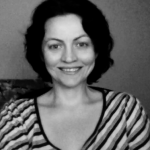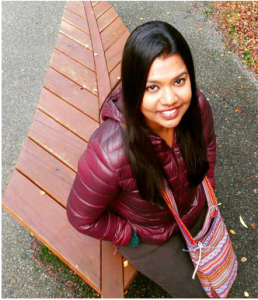flickr photo shared by andreas.klodt under a Creative Commons ( BY-NC-SA ) license
This article was co-authored over THREE timezones, by Maha Bali (in Cairo, Egypt), Kate Bowles (in Wollongong, Australia) and Paul Prinsloo (South African currently in Virginia, USA) and refers to a workshop we are co-facilitating at the Digital Pedagogy Lab Institute in UMW. You can watch live (or recorded) at this YouTube link (we hope YouTube works or at least streams well enough in your country). The workshop takes place Thursday August 11 at 4pm EDT (Virtually connecting website converts to your timezone – because we know we all live in different timezones – it will already by Friday for Kate!)
Yesterday, in a Virtually Connecting conversation, Ken Bauer commented on having virtual participants located in Mexico, Austria, South Africa and Egypt, compared to a regular VC hangout where most people were usually from the US. He asked how we could create more such conversations. Audrey Watters commented on the importance of this given the limited US-centric views of ed tech. Jesse Stommel and Maha Bali talked about intentionality: recognizing the importance of internationalism and acting upon it are very different things.
A while ago, Digital Pedagogy Lab co-directors Jesse Stommel and Sean Michael Morris asked Maha to create a hybrid workshop for DPLI UMW on “something international”, to invite other facilitators and organize it however she saw fit. This invitation is encouraging: it recognizes the value of having international voices be part of such an intensively local event, with the freedom to speak for themselves, including in quite critical ways.
Maha invited Paul Prinsloo from South Africa (who will be onsite) and Kate Bowles from Australia (who like Maha will be a virtual participant). Working in various-sized education systems outside the US we’re all familiar with complications of wrangling international digital pedagogy out of faulty internet connections, language confusion, and above all timezone mismatches. This is also the infrastructure of our research and professional networking; for us, working as academics means international-first, not as an afterthought. So we responded enthusiastically.
Our collaboration in developing this workshop has itself been about the practicalities of working internationally. Sometimes we’ve all been online at the same time; just as often we’ve left messages for each other to find on waking up or getting to work. And while doing this, we’ve learned about each other’s work schedules, life histories and work spaces, as we’ve become sensitised to the work-life rhythms of our three lives. We use some but not all of the same channels, so even our three-way conversation isn’t completely contained anywhere. We don’t use the same digital devices and this has had a surprising impact on how we each work when we’re away from our desks. We can work together in English, but we’ve had to look things up to fully understand their meaning. And even though we’re familiar with each other’s work, it turns out we’re still unfamiliar with important elements in each other’s political, cultural and national context.
Since 2012 critical educators have been hearing regularly about how open digital pedagogy or social networking expands access to learning to everyone in the world. This is now such a familiar claim that we don’t need to name the edtech visionaries and entrepreneurial capitalists who’ve been relentlessly promoting it—it has become a defining truism in digital pedagogy. However, for most of us not in the US (or the UK), this vision has often signalled top-down, US-to-world, Anglo-oriented, decontextualized, culturally irrelevant, infrastructure-insensitive, and timezone-ignorant aspirations, even when the invitation for us to join in may be well-intentioned.
We want to rethink this one-way flow of benefits, and argue instead that all learning is enriched when we have the opportunity to hear from voices markedly different from our own. We want to suggest that when US culture and educational systems are the default for MOOCs and similar platforms, international voices are exoticized, marginalized and silenced at once. We also want to challenge the tendency to call something “global” when only two or three countries are involved, often including only participants from powerful institutions, and everything is in English.
But even for those learners/educators outside the US who do have both the internet and the English to participate, there are power dynamics that need to be made explicit. Whenever you connect online, you connect on someone’s terms, and in digital pedagogy these are often the terms designed by educators who enjoy the network infrastructure and cultural capital associated with US institutions. And while overcoming technical access barriers to the internet is critical for learners around the world, access on US terms or to spaces and platforms controlled by US assumptions can often introduce new cultural barriers for learners outside the US. Being more sensitive about these issues also allows us to recognize the fact that we often disregard issues of access and the different cultural and class barriers and the (in)visible fault-lines of race, gender and class in the US.
Our workshop is therefore an attempt to talk openly about how things look like from our respective non-US perspectives. We’ll be sharing case studies of our own experiences that will demonstrate different angles on the complexity of transnational education. And we will invite participants (onsite and virtually) to consider ways to build more inclusive networked learning experiences. While we are talking particularly about networked learning, much of what we discuss will apply to both onsite and online international learners and teachers.
We also recognize that inclusivity and cultural relevance are not unique to international learners, but connect to issues of identity and difference that are pressing within the US. There are learners inside the US for whom language or technology access are immediate practical barriers; and learners whose experience is continually affected by educators with a poor understanding of their cultural context or their personal priorities.
And this is why after one hour of discussing internationalness, we will have a hallway conversation with Annemarie Perez, Chris Gilliard (both onsite) and Sherri Spelic (virtually) on how identity and difference shape their practice in digital pedagogy.
If you can’t come to our workshop, we encourage you to read this article by Maha which is detailed but not very long case study on the shortcomings of an attempt at global learning). But we hope you can join us, as we explore what can be achieved in a three-timezone workshop relying on a network of regional and domestic internet technologies.
You can watch the workshop live here:
And the hallway conversation following it here:
And we will be working on a Google doc if you can’t be part of the live session but would like to contribute: http://bit.ly/inclusiveDigPed




 About the Author
Joanna Joseph Jeyaraj currently works and lives in Sarawak, land of the hornbills. She is interested in researching critical pedagogies in English language teaching and is eager to make connections and collaborate with others who have similar interests.
About the Author
Joanna Joseph Jeyaraj currently works and lives in Sarawak, land of the hornbills. She is interested in researching critical pedagogies in English language teaching and is eager to make connections and collaborate with others who have similar interests.
